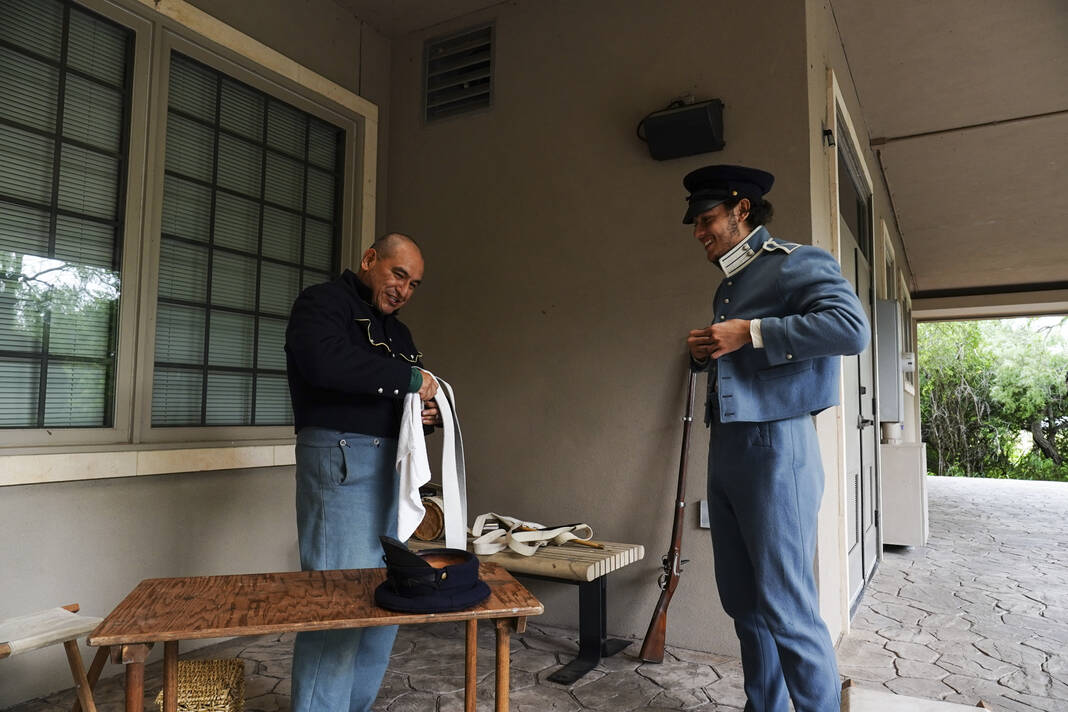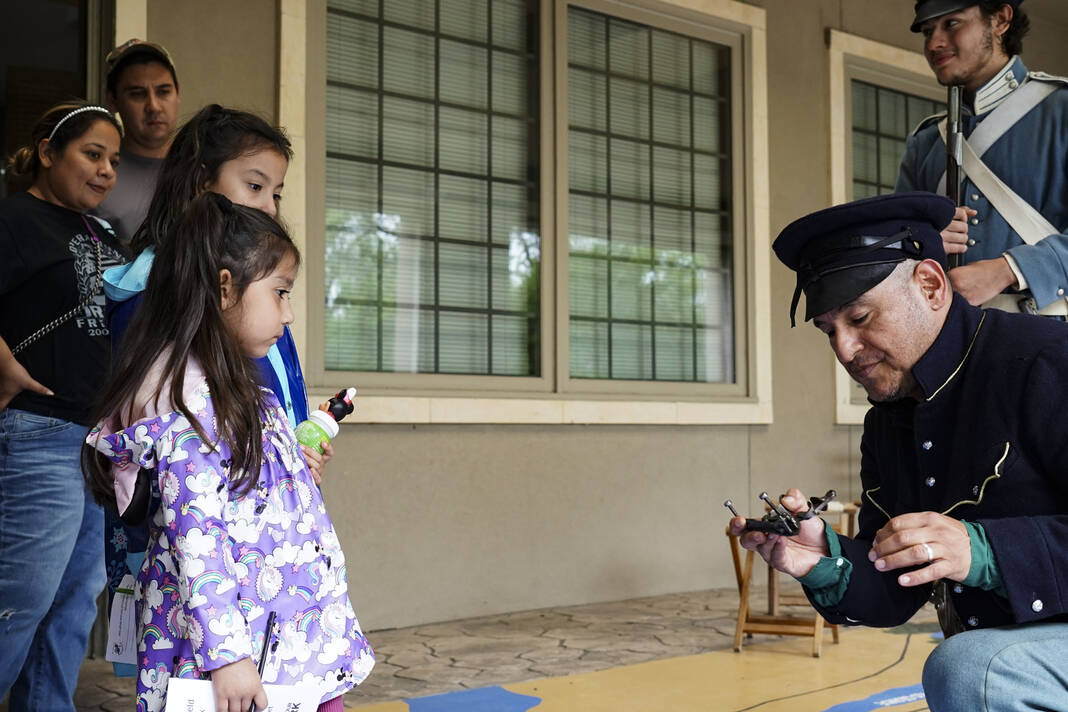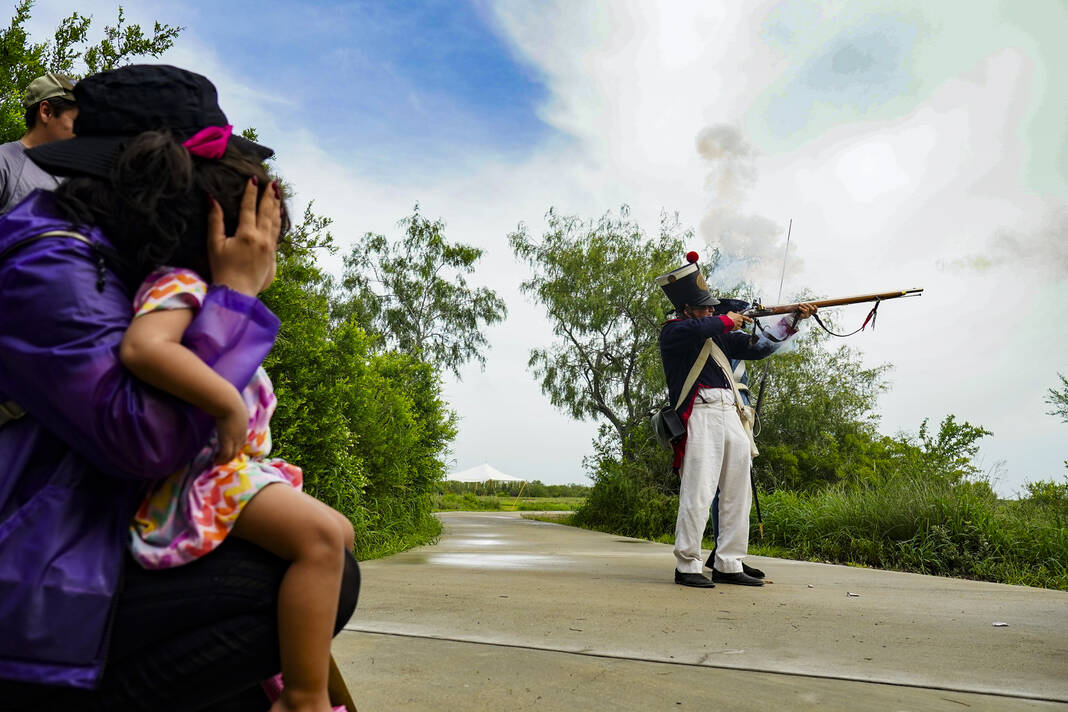It’s a humid Saturday morning as a small group gathers on the edge of the prairie in the Palo Alto Battlefield National Historical Park as Ruben Martinez, dressed as a 19th-century infantryman from the Mexican army, and Travis Dotson, dressed as a U.S. Army Pvt., raise their muskets to fire out into the brush for an artillery demonstration.
Martinez’s gun goes off with a spark and a bloom of smoke, Dotson’s—not so much.
Dressed as U.S. Army 2nd Lt. Daniel Ibarra, Palo Alto Battlefield National Historical Park’s Chief of Interpretation and Historic Weapons Supervisor, calls out: “it’s a misfire”. So the crowd waits as Dotson counts to 10 just in case the powder inside the musket is slowly smoldering— it isn’t. After a few more tries—and a flint sharpening—his musket finally goes off.

Dotson started the demonstration by walking visitors over the particulars of this weapon of the period, the musket. It was a temperamental, smooth-bore gun for which accuracy was something of prayer rather than a guarantee. It also often would misfire as the gunpowder absorbed water in high-humidity situations, like now.
“This was the average gun at the time. For 300 years this is what we used to fight all our battles in human history,” he informs the group.
The weapons demonstration is part of a program for park visitors called Living History to give attendees a sense of the first battle of the U.S.-Mexican War but also what it was like to be a soldier—including dealing with humidity.
The program provides a general survey lesson about the battle on the prairie and the consequences that followed but tries to place the events in a historical context.
“I think it is important to personalize the people here at this battle,” Ibarra said.
Visitors receive information on what people might have eaten during the campaign or what they did outside of battle—since combat was only a small portion of their everyday lives in the military. Ibarra talks about the letters soldiers sent back to their families about their experiences as they went through the markets of Puebla or Mexico City and saw customs and goods of a different culture for the first time.

Living History started at the park in 2006 as a way to draw in more locals and provide education about a battle that was the first clash between U.S. and Mexican forces in 1846, which defined the development of Texas as a state, along with New Mexico and California, that remains still relatively unknown.
When the museum opened its doors in 2004, according to Ibarra, visitation to the park was largely seasonal and mostly winter Texans and school groups on field trips. Over the years, the knowledge has grown, but the number of locals is still lower than he’d like.
The goal has been to make how people perceive history less as one of a few static points on a timeline but as something that still ripples outward through the years to today’s news events.
“For me, it’s like, we have this right here, and people aren’t aware of what occurred here and the significance their backyard had on U.S. history and world history if you think about it. So if we can help people to see that there are special things about the places that they call home—that’s always been a big driver for me,” Ibarra said.
Living History happens at least once a month during the season from September to May, weather permitting, as a free event for the public. For more information, you can visit the park’s Facebook page at Palo Alto Battlefield National Historical Park or their website at www.nps.gov/paal/.





